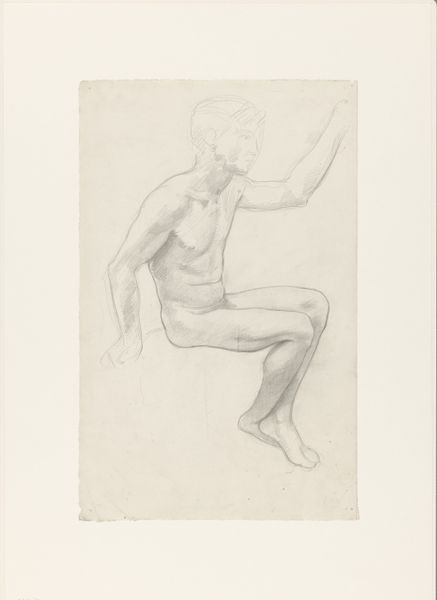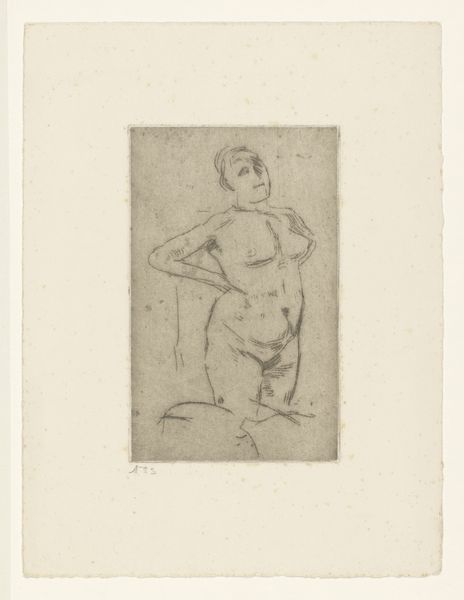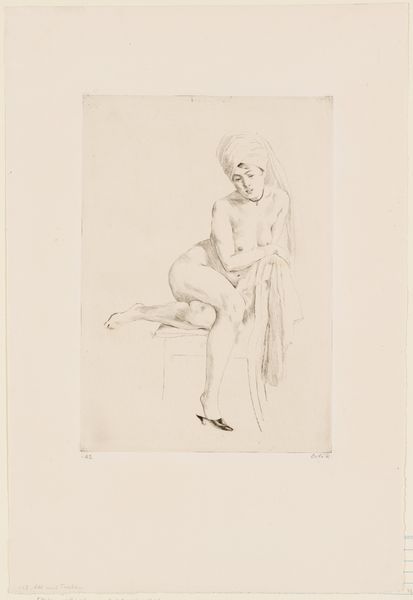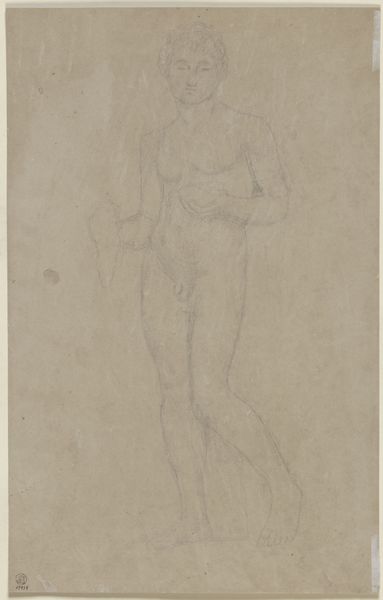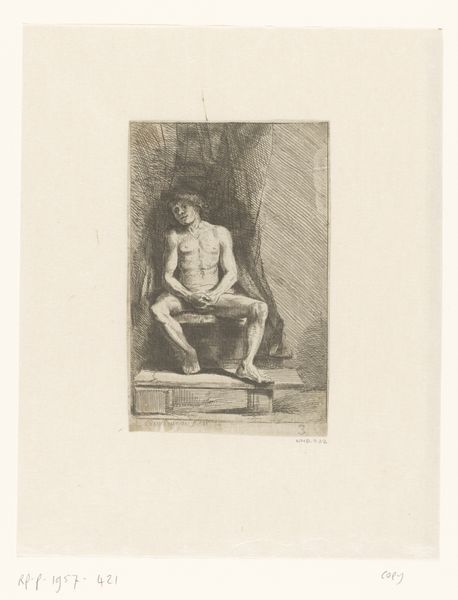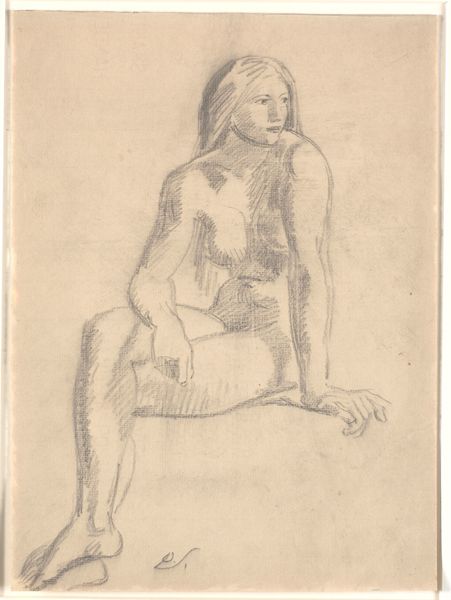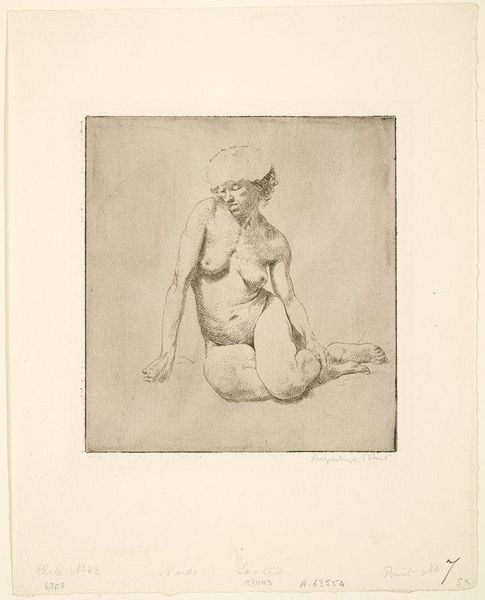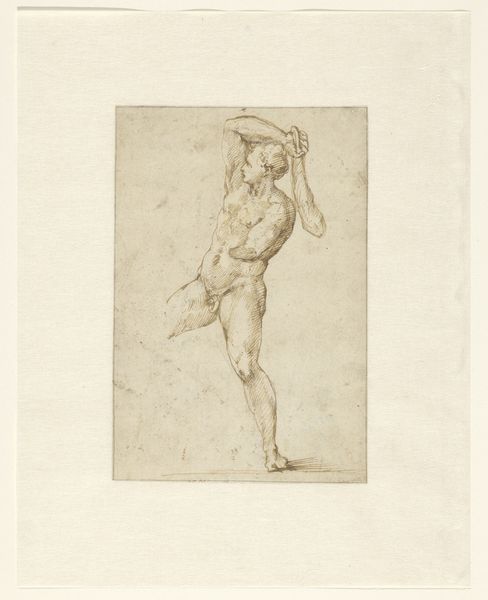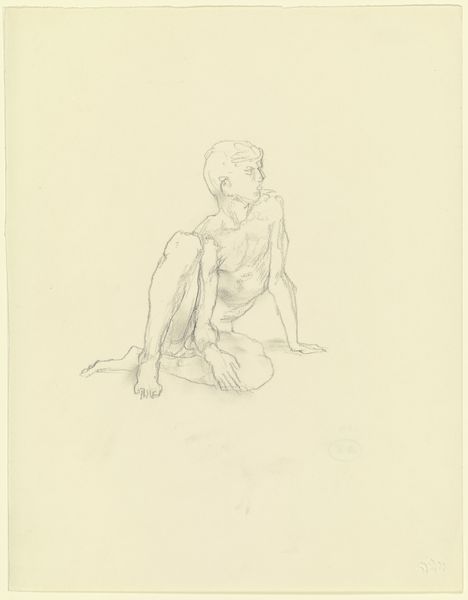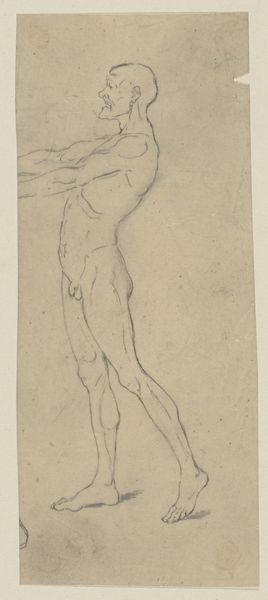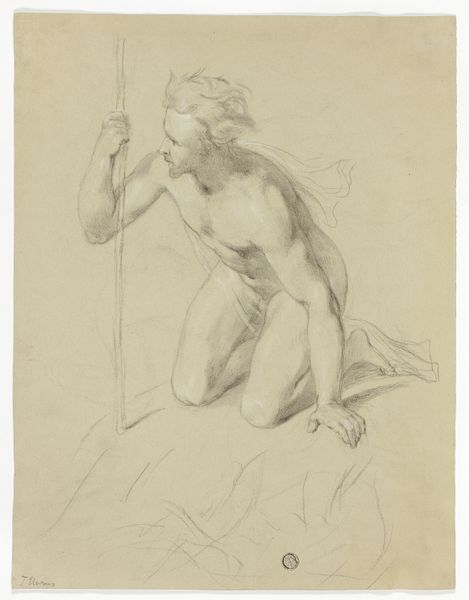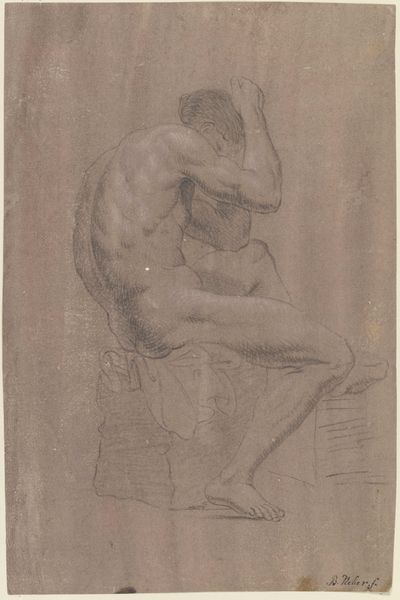
Staand mannelijk naakt in het water met touw over de schouder 1878 - 1938
0:00
0:00
drawing, pencil
#
portrait
#
drawing
#
pencil
#
nude
Dimensions: height 385 mm, width 252 mm
Copyright: Rijks Museum: Open Domain
Richard Nicolaüs Roland Holst rendered this drawing of a nude man with a rope in graphite. The most striking motif here is the rope draped over the man's shoulder. The rope is one of civilization's oldest tools, loaded with symbolic weight. In many cultures, it represents connection, binding, and passage. Consider the umbilical cord, the lifeline between mother and child, a primal connection forged with a natural 'rope.' We see echoes of this binding motif in other artworks and rituals, from the Gordian Knot, symbolizing an intricate problem, to the sailor's knot, a pledge of unity and strength. Note, too, how this contrasts with images of a 'broken cord', representing death. The rope’s presence here creates a powerful tension. Is it a burden or a tool? A constraint or a connection? Like an ancient symbol that resurfaces in dreams, the rope evokes a deep-seated emotional response, an unconscious recognition of our ties to the world and each other. It’s a reminder of the enduring power of symbols and the intricate web of meaning that binds us across time.
Comments
No comments
Be the first to comment and join the conversation on the ultimate creative platform.
